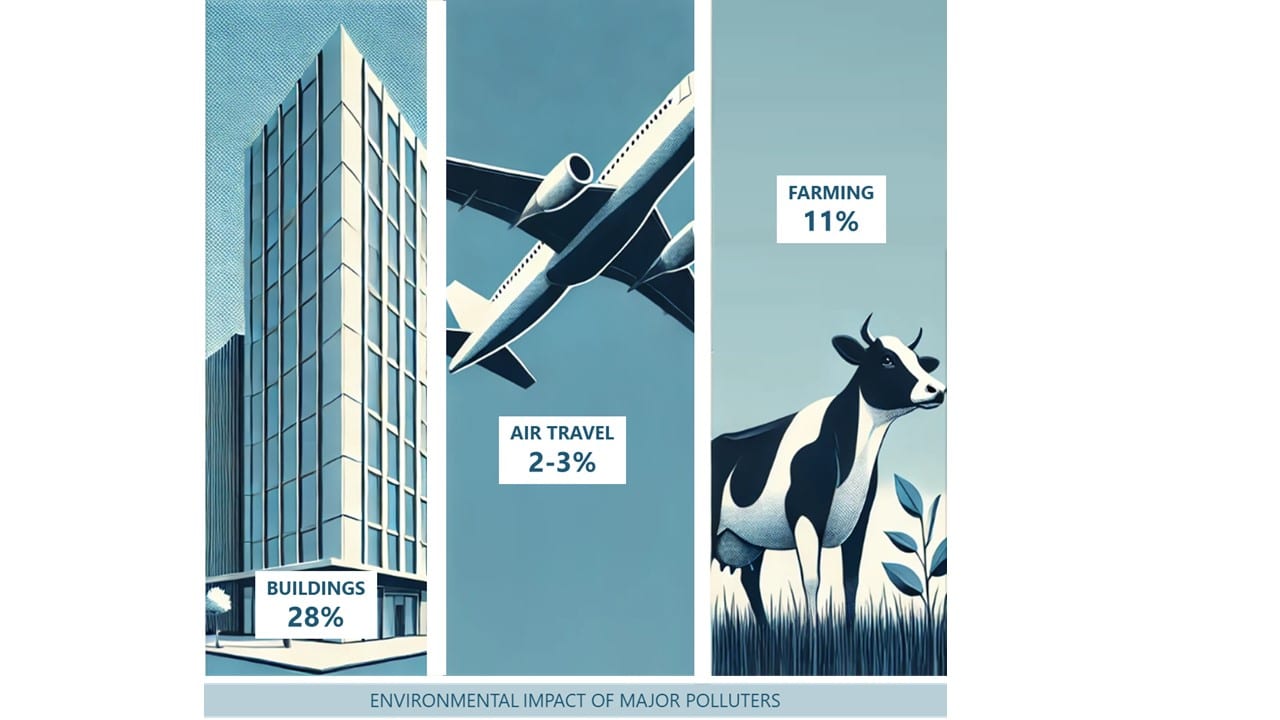ENERGY & CO2 SAVINGS
More Effective building ventilation can have a major CO2 impact
The potential for ventilation systems to help reduce CO2 is grand. Overall, the operations of buildings account for about 26% of global CO2 emissions (IEA, 2023a). On their own, ventilation systems account for circa 20% of energy consumption in buildings. When we add this up, it means that ventilation systems represent around 6%-12% of global CO2 emissions.
In comparison, the aviation industry is responsible for approximately 2-3% of global CO2 emissions, and meat production contributes around 10% of global greenhouse gas emissions, as stated by the Intergovernmental Panel on Climate Change (IPCC). While reducing air travel and meat consumption can have a significant impact, upgrading your ventilation system offers a solution that achieves energy and CO2 savings without major lifestyle changes for building occupants.
Most ventilation systems currently use bag filters that require high pressure for air cleaning. This results in significant energy consumption, and the filters need replacement and disposal at least once a year, further negatively impacting the carbon footprint through production, waste management, and energy usage.
By upgrading your ventilation system and replacing conventional filters with electronic filters, you can achieve energy savings of over 30% of your ventilation energy usage. Electronic filters also have the advantage of reusability, further contributing to reduced energy consumption and CO2 emissions.
While mindful consumption of meat and air travel remains important, upgrading your ventilation system offers a tangible step towards addressing energy and CO2 issues without major behavioral changes.

Energy consumption, particularly from ventilation, can account for a significant portion of building operations, typically ranging from approximately 20% to 40% of the total energy used. Upgrading ventilation systems can have a substantial environmental impact, comparable to sectors like air travel and meat production

